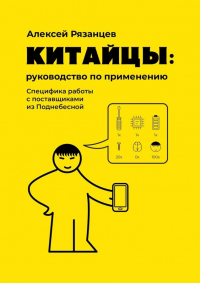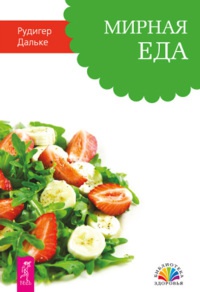Ознакомительная версия. Доступно 26 страниц из 126
Rusko. “Effects of vigorous late-night exercise on sleep quality and cardiac autonomic activity.” Journal of Sleep Research 20, no. 1pt2 (2011): 146–153; Yoshida, Hironori, Tohru Ishikawa, Fumio Shiraishi, and Toshinori Kobayashi. “Effects of the timing of exercise on the night sleep.” Psychiatry and Clinical Neurosciences 52, no. 2 (1998): 139–140.
19 Khodr, Amy, Caroline Awada, Massoot Mohammed, and Reabal Najjar. “Bump and sleep: how sexual intercouse can improve sleep of women with insomnia.” Accessed August 18, 2017. ruor.uottawa.ca/handle/10393/35554?mode=full.
20. Singleton, David W., and Sohaib A. Khan. “Xenoestrogen exposure and mechanisms of endocrine disruption.” Frontiers in Bioscience 8 (2003): s110–s118.
21. Gore, A.C., D. Crews, L.L. Doan, M. La Merrill, H. Patisaul, and A. Zota. “Introduction to endocrine disrupting chemicals (EDCs) – a guide for public interest organizations and policy makers.” Endocrine Society Reports and White Papers 1 (2014): 1–69.
22. “Recent Trends in GE Adoption.” Accessed August 22, 2017. www.ers.usda.gov/data-products/adoption-of-genetically-engineered-crops-in-the-us/recent-trends-in-ge-adoption.aspx.
23. USDA Food Safety and Inspection Service. “FSIS.” Accessed September 10, 2018. www.fsis.usda.gov/wps/portal/fsis/topics/food-safety-ducation/get-answers/food-safety-fact-sheets/meat-preparation/beef-from-farm-to-table; Health Canada. “Questions and Answers – Hormonal Growth Promoters.” Accessed September 10, 2018. www.canada.ca/en/health-canada/services/drugs-health-products/veterinary-drugs/factsheets-faq/hormonal-growth-promoters.html.
24. Health Canada. “Questions and Answers – Hormonal Growth Promoters.” Accessed September 10, 2018. www.canada.ca/en/health-canada/services/drugs-health-products/veterinary-drugs/factsheets-faq/hormonal-growth– promoters.html; Social Protection Statistics – Unemployment Benefits – Statistics Explained. “Hormones in Meat – Food Safety – European Commission.” Accessed September 10, 2018. ec.europa.eu/food/safety/chemical_safety/meat_hormones_en.
25. Mnif, Wissem, Aziza Ibn Hadj Hassine, Aicha Bouaziz, Aghleb Bartegi, Olivier Thomas, and Benoit Roig. “Effect of endocrine disruptor pesticides: a review.” International Journal of Environmental Research and Public Health 8, no. 6 (2011): 2265–2303.
26. Benbrook, Charles M. “Trends in glyphosate herbicide use in the United States and globally.” Environmental Sciences Europe 28, no. 1 (2016): 1–15.
27. Monsanto International S.A.R.L. and Monsanto Europe S.A. “The agronomic benefits of glyphosate in Europe: review of the benefits of glyphosate per market use.” Review (2010): 1–82.
28. Darwent, A.L., K.J. Kirkland, L. Townley-Smith, K.N. Harker, A.J. Cessna, O.M. Lukow, and L.P. Lefkovitch. “Effect of preharvest applications of glyphosate on the drying, yield and quality of wheat.” Canadian Journal of Plant Science 74, no. 2 (1994): 221–230.
29. Samsel, Anthony, and Stephanie Seneff. “Glyphosate, pathways to modern diseases II: Celiac sprue and gluten intolerance.” Interdisciplinary Toxicology 6, no. 4 (2013): 159–184.
30. Bøhn, Thomas, Marek Cuhra, Terje Traavik, Monica Sanden, J. Fagan, and R. Primicerio. “Compositional differences in soybeans on the market: glyphosate accumulates in Roundup Ready GM soybeans.” Food Chemistry 153 (2014): 207–215.
31. “EWG.” Accessed March 30, 2018. www.ewg.org.
32. Center for Food Safety and Applied Nutrition. “Ingredients – Phthalates.” US Food and Drug Administration Home Page. Accessed August 21, 2017. www.fda.gov/cosmetics/productsingredients/ingredients/ucm128250.htm.
33. Chen, Xueping, Shisan Xu, Tianfeng Tan, Sin Ting Lee, Shuk Han Cheng, Fred Wang Fat Lee, Steven Jing Liang Xu, and Kin Chung Ho. “Toxicity and estrogenic endocrine disrupting activity of phthalates and their mixtures.” International Journal of Environmental Research and Public Health 11, no. 3 (2014): 3156–3168.
34. Parlett, Lauren E., Antonia M. Calafat, and Shanna H. Swan. “Women’s exposure to phthalates in relation to use of personal care products.” Journal of Exposure Science & Environmental Epidemiology 23, no. 2 (2013): 197–206.
35. USDA. “Adoption of Genetically Engineered Crops in the US.” Accessed August 21, 2017. www.ers.usda.gov/data-products/adoption-of-genetically-engineered-crops-in-the-us.aspx.
36. Biotech Country Facts and Trends – ISAAA Publications. “Biotech Country Facts and Trends – India.” Accessed August 21, 2017. www.isaaa.org/resources/publications/biotech_country_facts_and_trends/download/Facts%20and%20Trends%20-%20India.pdf.
37. US Food and Drug Administration Home Page. “Women’s Health Research – Dioxin in Tampons.” Accessed August 21, 2017. www.fda.gov/scienceresearch/specialtopics/womenshealthresearch/ucm134825.htm
38. Gibson, Douglas A., and Philippa T.K. Saunders. “Endocrine disruption of oestrogen action and female reproductive tract cancers.” Endocrine-Related Cancer 21, no. 2 (2014): T13–T31; Hutz, R.J., M.J. Carvan III, J.K. Larson, Q. Liu, R.V. Stelzer, T.C. King-Heiden, M.G. Baldridge, N. Shahnoor, and K. Julien. “Familiar and novel reproductive endocrine disruptors: xenoestrogens, dioxins and nanoparticles.” Current Trends in Endocrinology 7 (2014): 111–122; Marshall, Nikki B., and Nancy I. Kerkvliet. “Dioxin and immune regulation.” Annals of the New York Academy of Sciences 1183, no. 1 (2010): 25–37; Hutz, R.J., M.J. Carvan, M.G. Baldridge, L.K. Conley, and T.K. Heiden. “Environmental toxicants and effects on female reproductive function.” Trends in Reproductive Biology 2 (2006): 1–11.
39. Hutz, R.J., M.J. Carvan, M.G. Baldridge, L.K. Conley, and T.K. Heiden. “Environmental toxicants and effects on female reproductive function.” Trends in Reproductive Biology 2 (2006): 1–11.
40. Alonso-Magdalena, Paloma, Ana Belén Ropero, Sergi Soriano, Marta García-Arévalo, Cristina Ripoll, Esther Fuentes, Iván Quesada, and Ángel Nadal. “Bisphenol-A acts as a potent estrogen via non-classical estrogen triggered pathways.” Molecular and Cellular Endocrinology 355, no. 2 (2012): 201–207; Mileva, Guergana, Stephanie L. Baker, Anne Konkle, and Catherine Bielajew. “Bisphenol-A: epigenetic reprogramming and effects on reproduction and behavior.” International Journal of Environmental Research and Public Health 11, no. 7 (2014): 7537-7561; Richter, Catherine A., Linda S. Birnbaum, Francesca Farabollini, Retha R. Newbold, Beverly S. Rubin, Chris E. Talsness, John G. Vandenbergh, Debby R. Walser– Kuntz, and Frederick S. vom Saal. “In vivo effects of bisphenol A in laboratory rodent studies.” Reproductive Toxicology 24, no. 2 (2007): 199-224; Caserta, Donatella, Noemi Di Segni, Maddalena Mallozzi, Valentina Giovanale, Alberto Mantovani, Roberto Marci, and Massimo Moscarini. “Bisphenol A and the female reproductive tract: an overview of recent laboratory evidence and epidemiological studies.” Reproductive Biology and Endocrinology 12 (2014): 12–37.
41. Kandaraki, Eleni, Antonis Chatzigeorgiou, Sarantis Livadas, Eleni Palioura, Frangiscos Economou, Michael Koutsilieris, Sotiria Palimeri, Dimitrios Panidis, and Evanthia Diamanti-Kandarakis. “Endocrine disruptors and polycystic ovary syndrome (PCOS): elevated serum levels of bisphenol A in women with PCOS.” The Journal of Clinical Endocrinology & Metabolism 96, no. 3 (2010): E480–E484; Cobellis, Luigi, Nicola Colacurci, Elisabetta Trabucco, Carmen Carpentiero, and Lucia Grumetto. “Measurement of bisphenol A and bisphenol B levels in human blood sera from healthy and endometriotic women.” Biomedical Chromatography 23, no. 11 (2009): 1186–1190; Signorile, Pietro G., Enrico P. Spugnini, Luigi Mita, Pasquale Mellone, Alfredo D’Avino, Mariangela Bianco, Nadia Diano et al. “Prenatal exposure of mice to bisphenol A elicits an endometriosis-like phenotype in female offspring.” General and Comparative Endocrinology 168, no. 3 (2010): 318–325; Bhan, Arunoday, Imran Hussain, Khairul I. Ansari, Samara AM Bobzean, Linda I. Perrotti, and Subhrangsu S. Mandal. “Bisphenol-A and diethylstilbestrol exposure induces the expression of breast cancer associated long noncoding RNA HOTAIR in vitro and in vivo.” The Journal of Steroid Biochemistry and Molecular Biology 141 (2014):
Ознакомительная версия. Доступно 26 страниц из 126
























